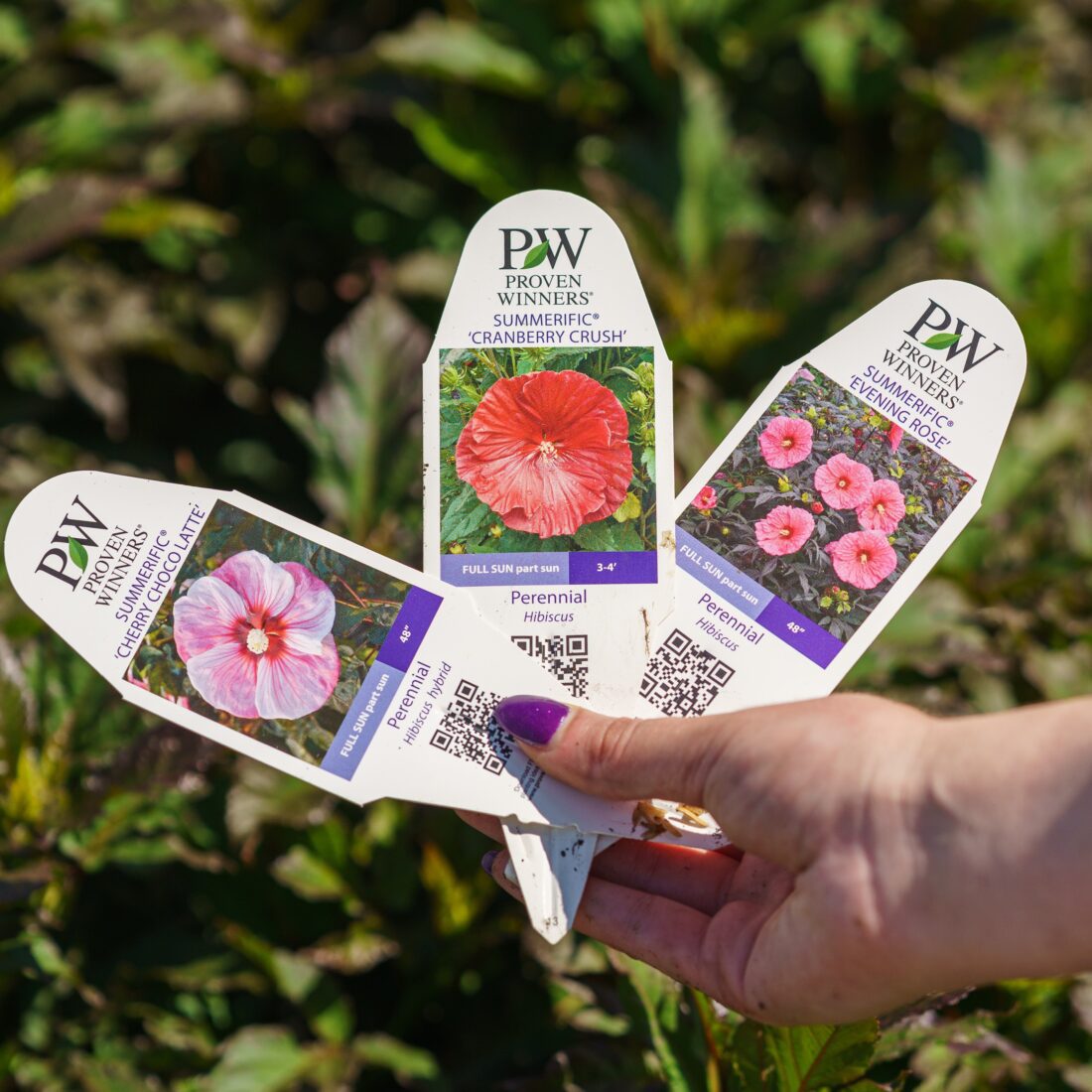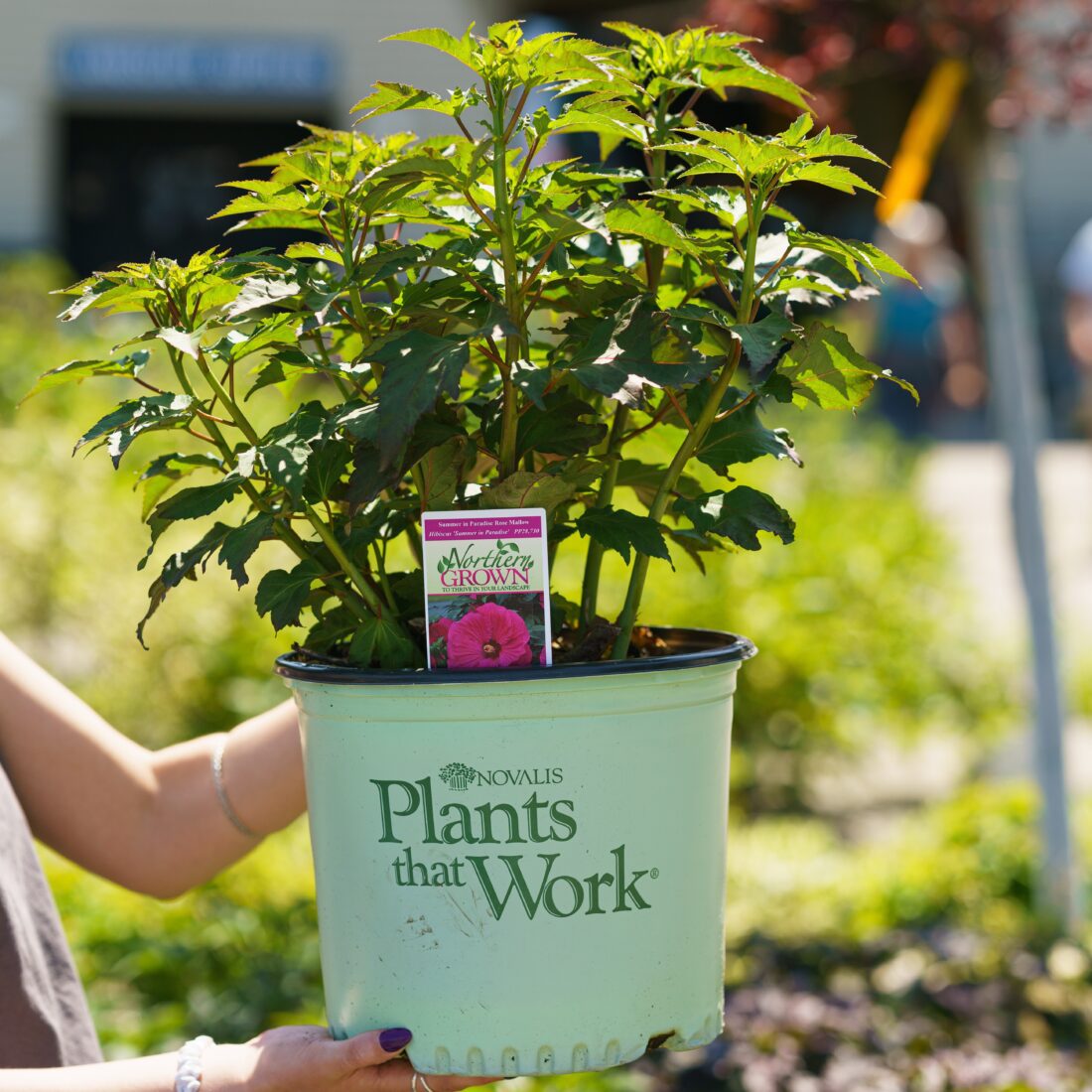June 27, 2020
Perennial Hibiscus: Big Tropical Blooms for Your Garden
When you think of hibiscus, you might picture giant blooms swaying in a warm breeze or vibrant flowers printed on your favorite vacation shirt. But hibiscus isn’t just for the tropics — it’s a diverse family of plants that can brighten gardens across the country, even in colder climates. Some types are tender and grown indoors, while others are hardy perennials or shrubs that return year after year. One of our favorites for a show-stopping summer garden is the perennial hibiscus, also known as Rose Mallow or hardy hibiscus.
Water, Water, and More Water
If you remember just one thing about Rose Mallow, let it be this: keep it well-watered. Perennial hibiscus loves moisture — in fact, some native species naturally grow right in wet, marshy spots. To keep your plant happy, choose a location where you can easily water it regularly.
No matter what type of soil you have — clay, sandy, or loamy — the key is to never let this plant completely dry out. A thirsty hardy hibiscus will let you know it’s stressed: the plant may look sparse, drop its lower leaves, or lose flower buds before they open. Consistent watering means lush growth and an abundance of its stunning, plate-sized blooms.
Tip: Adding a layer of mulch around the base can help the soil retain moisture and keep roots cool during the hottest part of summer.
Give It Plenty of Space
Rose Mallow isn’t shy — it likes to spread out! Even so-called “dwarf” varieties can reach at least three feet tall and wide, while standard varieties often grow up to six feet in both directions.
When deciding where to plant, pick a spot where this big beauty won’t crowd or overshadow its neighbors. It’s a great choice for the back of a sunny flower bed or as a bold focal point on its own. Give it room to show off — you won’t regret it when you see it in full bloom!
Sunshine Makes It Shine
Full sun is the secret to the most spectacular display. Perennial hibiscus thrives on heat, humidity, and sunlight. The more direct sun it gets, the more flowers you’ll enjoy — and the more vibrant the leaf color will stay, especially for varieties with dramatic purple foliage.
It can tolerate some light shade, but you’ll likely see fewer blooms and more muted leaf colors. For the biggest, most brilliant flowers, plant your hardy hibiscus where it will soak up at least six hours of direct sunlight each day.
Don’t Worry — It’s Not Dead!
One thing that surprises many gardeners is how perennial hibiscus behaves in winter. When the temperatures drop, Rose Mallow goes completely dormant — all those lush green stems and leaves will die back, leaving behind bare, woody stalks that look like sticks poking out of the ground. Don’t panic! This is perfectly normal.
In late fall or early spring, once the stems are dry and brittle, cut the entire plant back to a few inches above the ground. This cleanup helps keep the plant healthy and makes room for fresh new shoots to emerge when warm weather returns. With a little patience, you’ll be rewarded with a burst of gorgeous growth and blooms next summer.
Ready to add a touch of tropical drama to your yard? Stop by your local Mahoney’s in store or online and explore our beautiful selection of hardy perennial hibiscus. Our team is always here to help you choose the perfect variety and share tips to help it thrive!



